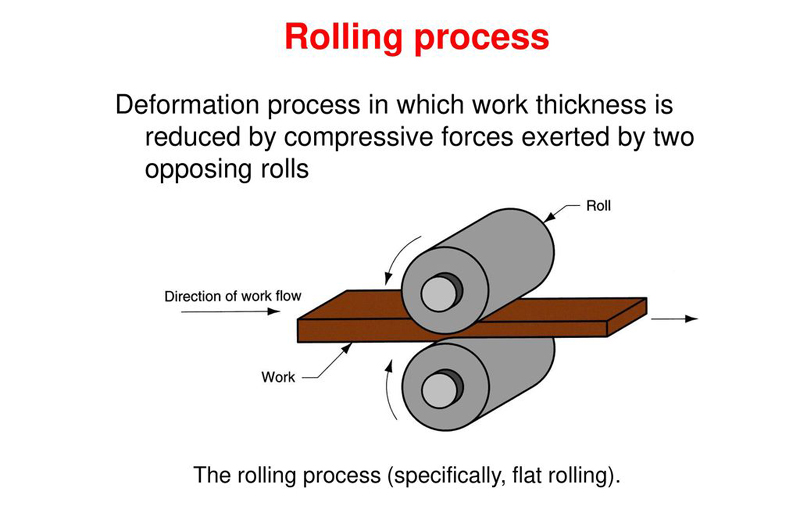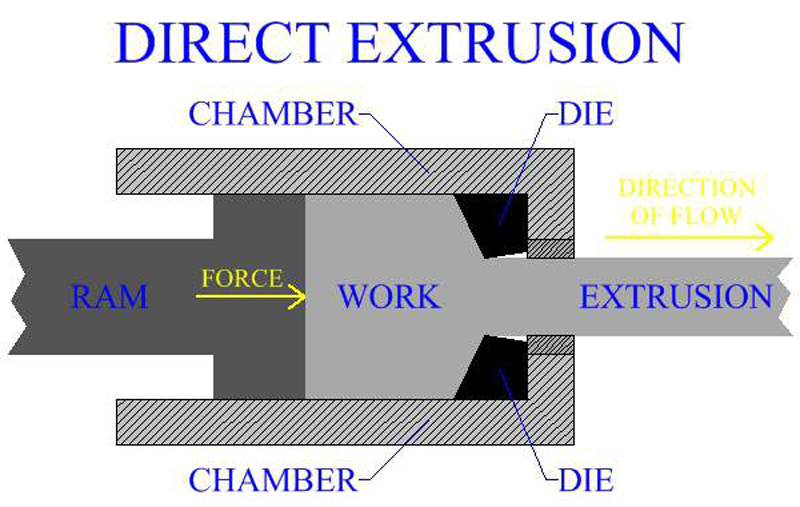By lyuesword | 24 February 2021 | 0 Comments
Common Metalworking Processes
Metalworking plays a key role in shaping our modern society. Without this industry, we wouldn't have other industries like manufacturing, automotive, aerospace, Information Technology (IT) and more. Today, we're going to explore some of the most common metalworking processes, revealing why they are important and how they differ.
Casting

Commonly used during the Bronze Age to produce bronze swords, knives and other weapons, casting is a metalworking process that involves pouring molten metal into a shaped mold. Once the metal has cooled, the item is dislodged from the mold, resulting in a finished (or near-finished) product.
Forging

Swordsmiths and metalworkers realized that casted swords weren't particularly strong, so they sought to create a new method; thus, paving the way for forging. Unlike casting, forging doesn't involve the use of a shaped mold. Instead, fiery-hot slabs of metal (billets) are hammered down to achieve the desired shape. In the past, this was done using a traditional blacksmith's hammer. Today, however, it's often performed using a mechanical forging tool known as a power hammer.
Rolling

Another common metalworking process is rolling. This technique lives up to its namesake by "rolling" heated billets through pairs of rollers. As the billet is forced through the rollers, it's reshape and compressed. The rolling technique is similar to the concept of rolling bread dough -- only heated metal is pressed through the rollers instead of dough.
There are several different types of rolling techniques. Hot rolling, for instance, involves the use of heat that exceed the respective metal's recrystalization temperature. Cold rolling, on the other hand, uses temperatures below the metal's recrystalization temperature. Other types of rolling techniques include ring rolling, roll forming, profile forming and controlling rolling.
Extrusion

Extrusion is an alternative metalworking process that's often preferred for its ability to create complex and detailed cross-sections. Additionally, it can handle metals and materials that are too brittle for other metalworking processes. Extrusion involves pushing heated billets through a shaped die. While the metal is solid and intact before it enters the die, it comes out in the shape of the die.
Fabrication
Last on our list of common metalworking processes is fabrication. This catch-all terms refers to the use of guillotines or gas-powered cutting devices to cut, bend and manipulate heated metal into a desired shape. Sheet metal, for instance, is commonly produced using fabrication techniques.
Want a unique sword? Feel free to contact us:
Email: lyuesword@hotmail.com
Website: www.lyuesword.com
Custom Sword Page: www.lyuesword.com/Custom-Sword/customization-options/Create-Your-Own-Swords
Casting

Commonly used during the Bronze Age to produce bronze swords, knives and other weapons, casting is a metalworking process that involves pouring molten metal into a shaped mold. Once the metal has cooled, the item is dislodged from the mold, resulting in a finished (or near-finished) product.
Forging

Swordsmiths and metalworkers realized that casted swords weren't particularly strong, so they sought to create a new method; thus, paving the way for forging. Unlike casting, forging doesn't involve the use of a shaped mold. Instead, fiery-hot slabs of metal (billets) are hammered down to achieve the desired shape. In the past, this was done using a traditional blacksmith's hammer. Today, however, it's often performed using a mechanical forging tool known as a power hammer.
Rolling

Another common metalworking process is rolling. This technique lives up to its namesake by "rolling" heated billets through pairs of rollers. As the billet is forced through the rollers, it's reshape and compressed. The rolling technique is similar to the concept of rolling bread dough -- only heated metal is pressed through the rollers instead of dough.
There are several different types of rolling techniques. Hot rolling, for instance, involves the use of heat that exceed the respective metal's recrystalization temperature. Cold rolling, on the other hand, uses temperatures below the metal's recrystalization temperature. Other types of rolling techniques include ring rolling, roll forming, profile forming and controlling rolling.
Extrusion

Extrusion is an alternative metalworking process that's often preferred for its ability to create complex and detailed cross-sections. Additionally, it can handle metals and materials that are too brittle for other metalworking processes. Extrusion involves pushing heated billets through a shaped die. While the metal is solid and intact before it enters the die, it comes out in the shape of the die.
Fabrication
Last on our list of common metalworking processes is fabrication. This catch-all terms refers to the use of guillotines or gas-powered cutting devices to cut, bend and manipulate heated metal into a desired shape. Sheet metal, for instance, is commonly produced using fabrication techniques.
Want a unique sword? Feel free to contact us:
Email: lyuesword@hotmail.com
Website: www.lyuesword.com
Custom Sword Page: www.lyuesword.com/Custom-Sword/customization-options/Create-Your-Own-Swords
Leave a Reply
Your email address will not be published.Required fields are marked. *